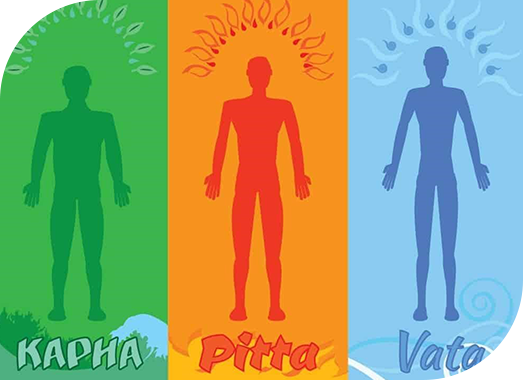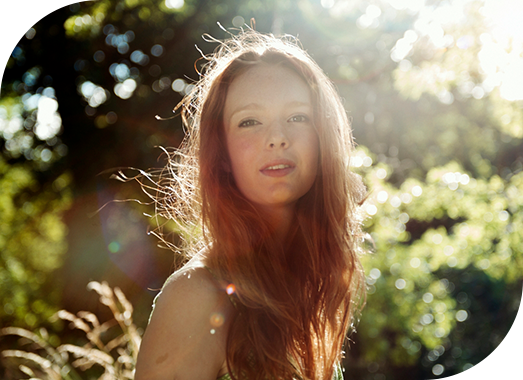What is Prakruti in Ayurveda?
Prakuti explains the essence of each individual, which is set at birth and is unique.
Without comparing people, because for Ayurveda everyone is a divine creation, Prakruti explains the differences between them.

Ayurveda perceives these differences as normal conditions, which are explained by the Doshas and their typical common character traits:
• Vata are emotional and sensitive, but often fickle;
• Pitta are pragmatists, usually assertive and easily “go on fire”;
• Kapha are calmer, slower and prone to inertia.
Thus, prakruti is actually a comprehensive concept of self-awareness of individual characteristics as something unique and defining our needs.
This has a direct bearing on lifestyle guidelines and maintaining health as a unity of body, psyche and mental activity.
Self-discovery and development – the main goal of prakruti
This helps to adapt to changes in the environment and maintain balance with the natural processes, cycles and energies that underlie human health.
Self-awareness is a prerequisite for a person to walk their path and reach Moksha – a higher level of consciousness in which the Divine principle is realized.
And vice versa – if a person does not realize their essence, they makes mistakes in their way of life, and these lead to virkruti – disturbance of balances in prakruti.
From there, the various diseases – of the body and of the spirit – which mutually influence each other, begin.

Then they get motivation, including to mobilize when treatment is necessary.
What are the categories of prakruti?
Among the main ones are the universal energies from which everything in the universe is built, destroyed or transformed, according to the set universal balance.
On this basis, we can speak of five categories according to which element has a dominant influence in the body:
• With Prutvi this is Earth;
• Jala corresponds to Water;
• Vayu corresponds to the element of Air;
• With a strong dominance of the Ether element, we have Akash,
• And Agni – if the Fire element prevails with its qualities.
If we take the Doshas as our starting point, the different Prakruti are according to the dominant energies in the body.

Maintaining prakruti is critical to health
On the basis of prakruti as a state of energy balance in the body, the following are defined:
• The body type
• The stronger and the more vulnerable parts of the body
• Predisposition to certain diseases
• Temperament and attitudes
• Harmful and healthy foods
• Way of eating
• Appropriate and inappropriate medications, etc.
In fact, this is how the healthy lifestyle for a person is determined, which will protect them from diseases.

Therefore, there is also a definition of “vikriti” – current state of energy balances.
What follows as a process is:
• If in vikriti there is a significant disturbance of the naturally set balances, an unnatural state and confusion of the functions of various organs in the body is reached.
• Since the organs are connected in interdependent systems – the disruption of their functions leads to disease of the whole organism.
• Therefore, the goal is for the current state – vikriti – to come as close as possible to the ideal prakruti pattern for the given person.
• Therefore, it is necessary for a person to know their naturally assigned body type and to adapt their lifestyle to it.
According to Ayurveda, diseases arise precisely because of a disturbed balance of the Doshas – the increase of one at the expense of another or others.
If prakruti is known, it will be possible to restore the normal balance in the body, one will be able to foresee the body’s vulnerabilities and to protect from them.
Determination of prakruti
Firstly, because multiple signs for the various combinations have to be systematized and compared.
And secondly, because an inexperienced person would easily be misled by current characteristics of vikritis, which should also be taken into account.
There are some more characteristic features that can improve the understanding of the main types of prakruti.

Vata prakruti
• The bones and fingers are also thin and light, while the neck is thin as well.
• The forehead is narrow and the skin is relatively dark – as if with a sun tan.
• Hair is dry, hard and dark, especially in childhood – in curls.
• When gaining weight, fat deposits are concentrated in the waist.
• All these marks are characteristic since childhood.
Pitta prakruti
• Bones, fingers and neck can also be defined as “medium”.
• Weight gain is distributed evenly throughout the body.
• The skin is relatively pale, often has freckles, is vulnerable to the sun.
• The hair is light and thin, in childhood – markedly blond.
Kapha prakruti
• The forehead is broad, the bones are dense and heavy, and the fingers are relatively short.
• Fat accumulations are mainly in the thigh area.
• Skin tone is even.
• The hair is thick, heavy and wavy, especially in the childhood years, which are also characterized by fullness.
Therefore, if you still decide to navigate your prakruti state without specialized help, it is good to seek the opinion of relatives and friends who know you well.

